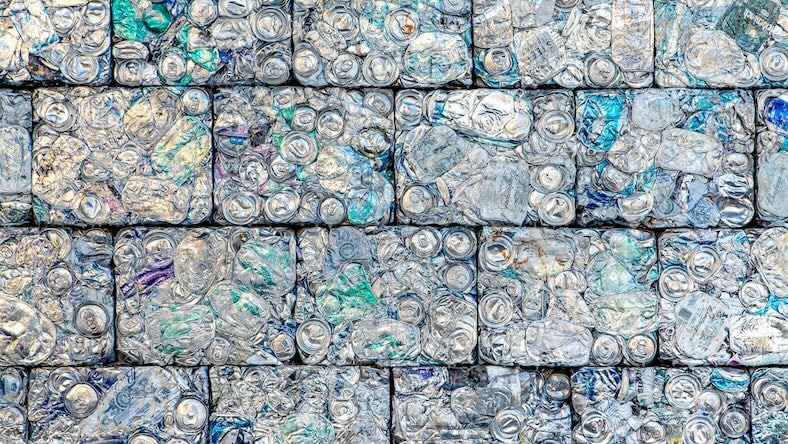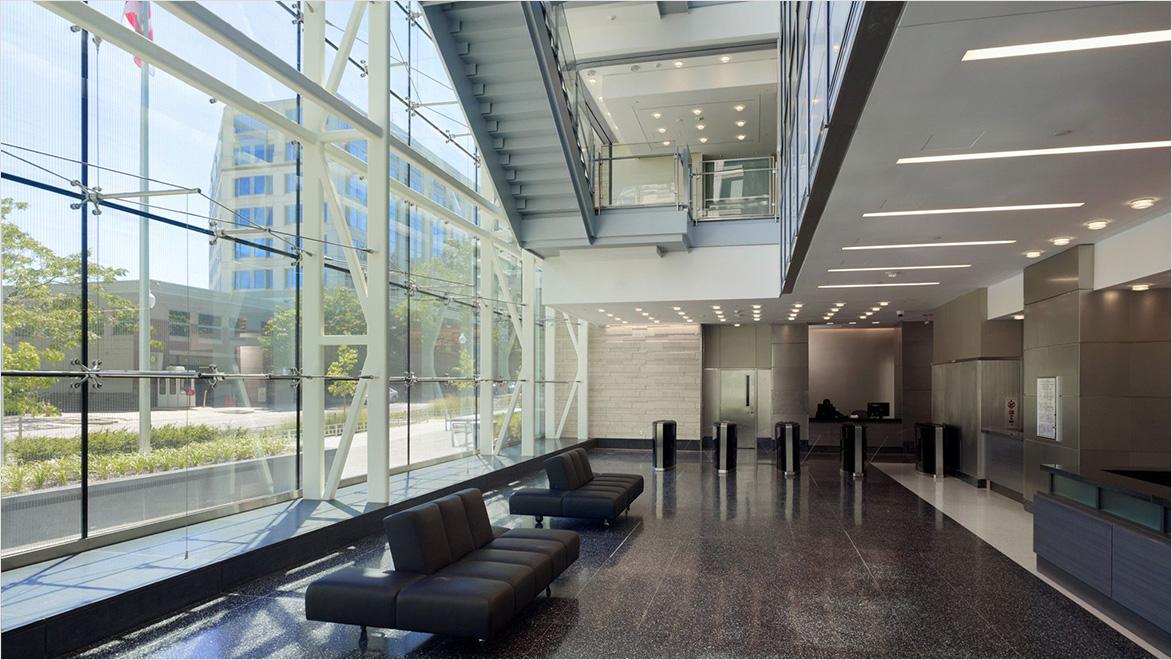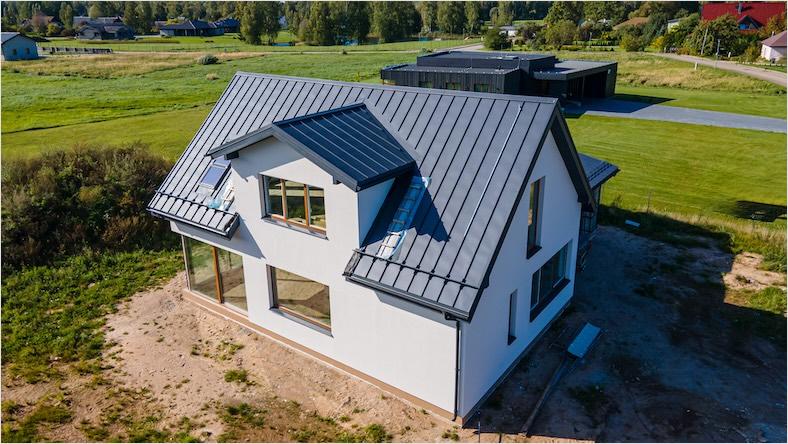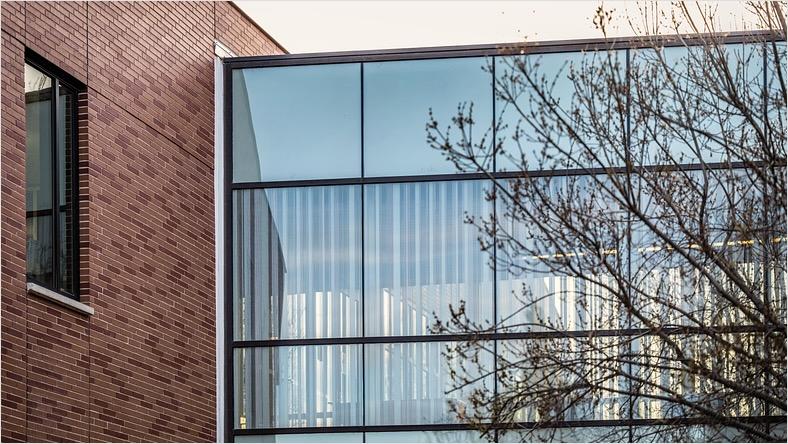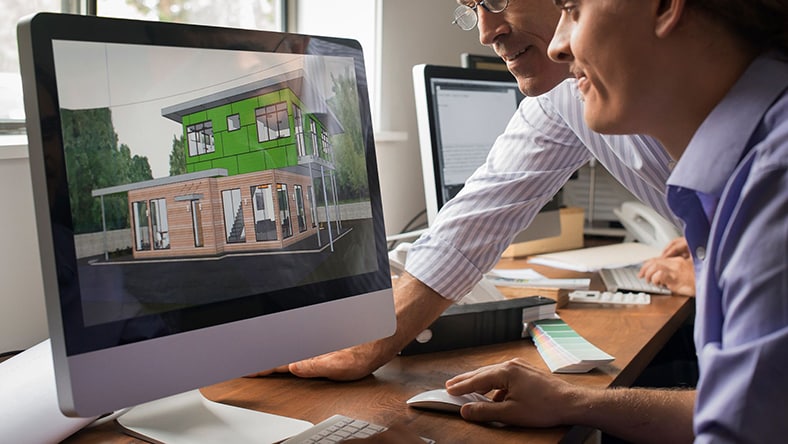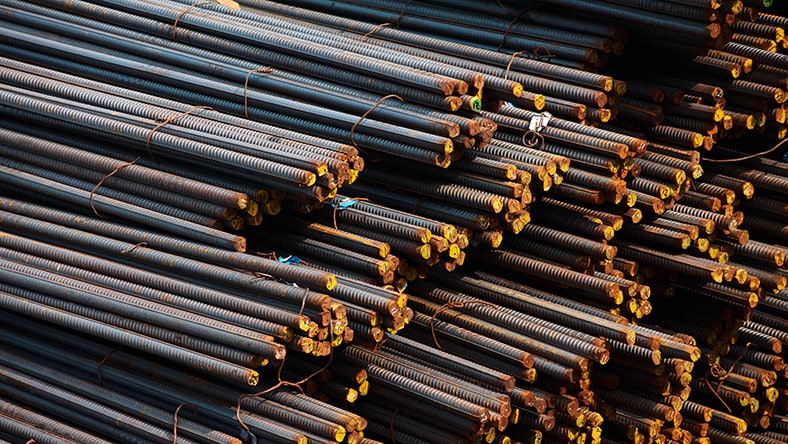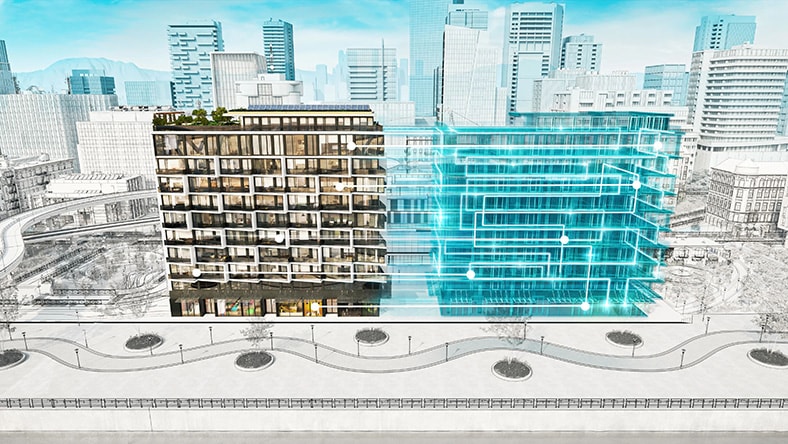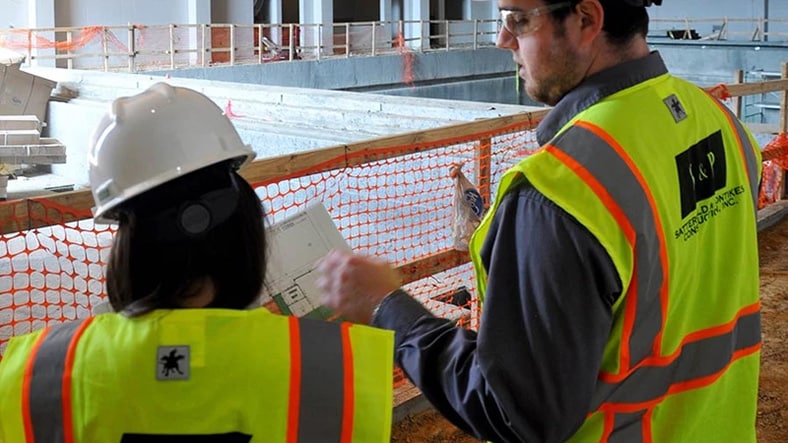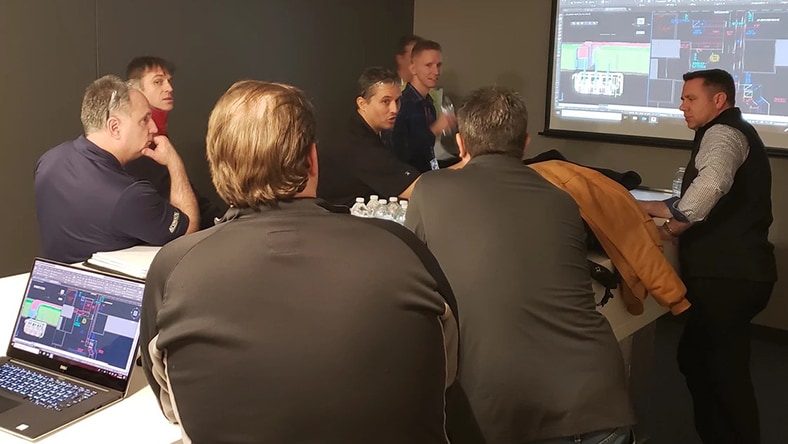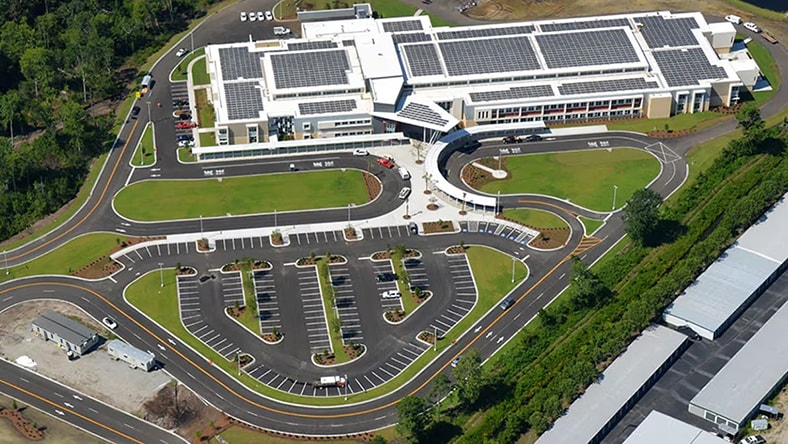& Construction

Integrated BIM tools, including Revit, AutoCAD, and Civil 3D
& Manufacturing

Professional CAD/CAM tools built on Inventor and AutoCAD
Green construction is a forward-thinking approach to designing and constructing environmentally friendly buildings. It encompasses a range of practices and principles that minimize negative impacts on the environment while maximizing energy efficiency and resource conservation. Unlike conventional construction methods, green construction prioritizes renewable materials, energy-efficient systems, and innovative design strategies.
At the core of green construction is green building design, which focuses on integrating sustainable principles throughout the entire building lifecycle. This includes site selection, water and energy efficiency, waste reduction, and indoor environmental quality. By using green design in construction, architects and engineers can create buildings that minimize energy consumption, reduce carbon emissions, and promote occupant well-being.
One key differentiator of green construction is its reliance on technology, particularly green construction software, to maximize productivity and help streamline the sustainable design process. Green design software gives architects and engineers advanced tools and features for efficient energy modeling, material selection, and environmental analysis. By harnessing advanced technology, professionals can make data-driven decisions, optimize building performance, and ultimately achieve higher levels of sustainability. The integration of technology in green construction enhances productivity and ensures that sustainable design principles are effectively implemented, resulting in buildings that are environmentally friendly and economically viable.
According to the UN, the global buildings and construction sector is responsible for an estimated 37% of carbon emissions. Green construction methods help to reduce this, one building at a time.
Building green has many positive social effects for residents, including less exposure to harmful pollutants, reduced energy bills, and improved overall well-being.
Autodesk’s 2023 Green Construction: A Global Transformation report showed the top reasons why companies embrace green practices: customer retention (86%), customer expectations (84%), and competitive advantage (75%).
Green construction’s core elements include energy efficiency, resource efficiency, and indoor environmental quality. Green design software plays a crucial role, optimizing energy efficiency by simulating and analyzing energy performance during the design phase. This gives professionals the tools to make informed decisions on insulation, lighting, HVAC efficiency, and renewable energy integration. It also facilitates resource efficiency through detailed material analysis and simulation, reducing waste and promoting recycling and reuse practices.
Green construction design software helps achieve optimal indoor environmental quality by simulating factors like natural lighting, thermal comfort, and indoor air quality, resulting in healthier and more comfortable spaces. Using green building software helps professionals create green buildings, meet regulatory requirements, earn green certifications, and prioritize energy efficiency, resource efficiency, and occupant well-being.
There are many ways a building can be made green, but generally, a green building has design attributes that make it more environmentally sound, including:
High quality insulation helps homes retain heat longer, requiring less energy and resources to stay at temperature.
Some green buildings generate their own electricity using renewable sources, such as photovoltaic panels that harness the sun’s energy.
Rainwater collection systems help maximize the natural resources surrounding the building.
Green construction often uses recycled materials, limiting waste and eliminating the need to create additional building materials.
Green building construction employs passive and active design strategies to maximize sustainability. Passive design strategies utilize ambient energy sources—such as solar energy and natural ventilation—to provide heating, cooling, and lighting within buildings. These green building strategies minimize energy consumption and reliance on non-renewable resources. On the other hand, active design strategies use technology to optimize building performance, incorporating energy-efficient systems and renewable energy integration. These strategies enhance energy efficiency, reduce carbon emissions, and improve occupant comfort.
Green building design software is vital for implementing and optimizing green design techniques. Architects and engineers can model and simulate passive and active design strategies, analyzing their performance and energy efficiency. Green building software tools also help integrate renewable energy systems by assessing feasibility, optimizing placement and sizing, and evaluating overall building performance. With sustainable construction software, professionals can confidently apply these design techniques to create energy-efficient, comfortable, and environmentally responsible buildings.
Green building design can refer to making wholesale changes across an entire design, but can also involve just a few simple changes which, when repeated across many units, can make a big difference. For example:
Metal roofing is energy efficient and helps reduce cooling costs for buildings in the summer. Many metal roofs are also made from recycled and eco-friendly building materials.
By reducing the amount of energy that escapes, energy-efficient windows can cut back on the financial and environmental costs of heating a building.
Electrical sockets that are more efficient and include energy saving features can help building users reduce their overall carbon footprint effortlessly.
You can get powerful intel and insights into how to minimize your construction waste and improve efficiencies via Autodesk’s Construction Cloud platform.
Green building design software informs energy-efficient design decisions, optimizing waste and materials for green buildings.
Green construction software reduces waste by optimizing material usage and promoting recycling and reuse.
Green design software facilitates sustainable material usage via analysis, optimization, and tracking.
Green construction design software optimizes energy usage through advanced modeling, analysis, and compliance tools.
Source and track materials to promote project sustainability and success.
Green construction software facilitates thorough lifecycle assessments with data collection and analysis.
Green construction software facilitates thorough lifecycle assessments with data collection and analysis.
Comprehensive field and project management software that delivers a broad, deep, and connected set of tools for builders.
Perform accurate 2D takeoffs and generate automated quantities from 3D models in a single online solution.
SATTERFIELD & PONTIKES
A general contractor increases accuracy, builds trust, and saves time with Autodesk Construction Cloud.
ATOMATIC MECHANICAL
A mechanical contractor saves $75K, eliminates gray areas, and enables more precise decision-making with Autodesk Build.
THOMAS & HUTTON
MQDC
A real-estate developer achieves lofty sustainability and livability goals, building “The Great Good Place” with building information modeling (BIM).
Image courtesy of Magnolia Quality Development Corporation
Explore the origins of green construction and learn best practices for implementation in the present and near future.
Design and build in a way that’s better for the world and better for business.
Learn from leading firms embracing a green construction future. See opportunities to drive green design.
Save money and time while producing energy-efficient building designs with Revit, Insight, and Green Building Studio.
Reduce time, labor, and costs with these green building design solutions.
Green construction and sustainable construction share similar goals but differ in scope. Green construction primarily focuses on minimizing negative environmental impacts through eco-friendly practices and technologies like energy efficiency, renewable energy, water conservation, waste reduction, and sustainable materials. It adopts innovative strategies and certifications to achieve these objectives.
On the other hand, sustainable construction takes a broader perspective by considering environmental, social, and economic factors. It aims to create buildings and infrastructure that meet present needs without compromising future generations’ ability to meet their own needs. Sustainable construction emphasizes social equity, community well-being, economic viability, and long-term resilience in addition to environmental responsibility.
Green construction and traditional construction represent two distinct approaches to building practices, with notable differences in their goals, methods, and outcomes. Traditional construction follows conventional industry practices and often prioritizes cost efficiency and speed of construction. It typically relies on standard materials and techniques that may not prioritize sustainability or energy efficiency.
In contrast, green construction emphasizes environmentally friendly practices and seeks to minimize negative impacts on the environment throughout the construction process and the building’s lifecycle. Green building construction incorporates energy-efficient design principles, utilizes sustainable materials, and integrates renewable energy systems. It focuses on reducing energy consumption, minimizing waste generation, improving indoor air quality, and promoting sustainable resource use.
Green construction software plays a vital role in reducing environmental impact through sustainable and efficient construction practices. It enables energy modeling and simulation, helping professionals optimize building energy performance and make informed decisions to reduce energy consumption and carbon emissions. The software supports sustainable material sourcing and tracking, providing access to extensive material databases and facilitating responsible procurement practices. It aids optimal resource use and waste reduction through detailed material analysis, identifying opportunities for material optimization and minimizing construction waste.
Overall, green construction software empowers professionals to make data-driven decisions, optimize building performance, and adopt sustainable practices. This results in a reduced environmental impact throughout the construction process and the building’s lifecycle.
Investing in green construction software offers a compelling return on investment (ROI) for several reasons. First, it improves operational efficiency by streamlining design processes, optimizing energy consumption, and reducing waste generation. First, it improves operational efficiency by helping streamline design processes, optimizing energy consumption, and reducing waste generation.
Additionally, green construction software helps future-proof buildings by incorporating sustainable design practices and technologies, reducing the need for costly retrofitting or upgrades down the line. Overall, the ROI of investing in green design software lies in cost savings, increased marketability, and long-term sustainability benefits.
The future of green construction software is promising, with advancements and innovations expected to support sustainable practices. Energy modeling and simulation capabilities will improve, providing more accurate predictions of building performance and energy efficiency. Integration with emerging technologies like artificial intelligence and machine learning will enhance data analysis and provide intelligent recommendations for sustainable design choices.
Overall, green construction software will continue to drive sustainable practices, increase efficiency, and reduce environmental impact in the construction industry.
When undertaking small construction projects, several simple green construction techniques can be employed to promote sustainability and reduce environmental impact. One technique is focusing on energy efficiency by incorporating proper insulation, sealing air leaks, and using energy-efficient appliances and lighting fixtures. This helps minimize energy consumption and lower utility costs. Another technique is prioritizing sustainable material choices, such as using recycled or reclaimed materials, locally sourced materials, or those with low environmental impact. Implementing effective waste management practices, such as recycling and proper disposal of construction waste, is also useful.





